寻找当代的马丘比丘
——秘鲁建筑师路易斯·隆吉的冒险之旅(使命)
2021-09-05Text石泽玛雅MayaIshizawa
文/ Text:石泽玛雅/ Maya Ishizawa
1911 年,美国探险家海勒姆·宾厄姆发现了当今最具标志性的印加建筑群——马丘比丘。即使这一事件被称为“发现”,当地人引导海勒姆·宾厄姆所到之地是15 世纪所建造的梯田“安迪内斯”遗址,而西班牙人在“发现”之前一个世纪就已到达印加土地。幸运的是,马丘比丘未并被西班牙殖民者发现,并且在植被的覆盖下保存了近500 年之久。
在海勒姆·宾厄姆为该印加建筑群带来价值时,秘鲁民族国家建设核心是关于民族认同的讨论,这一过程从1821 年开始,且尚未得到巩固。马丘比丘和乌鲁班巴河谷的其他印加考古遗址被选为这个新生国家的象征。印加建筑成为秘鲁身份创立的利用最多的象征。然而,在286 年的殖民化和基督教化过程中,土著人民、印加文明的继承者及其传统没有受到轻视。尽管如此,适应能力较强的安第斯社区人民仍坚持守护他们在马丘比丘等建筑中获得的世界观/传统知识。
然而,即使如此宏伟的建筑与其所处的环境相呼应,印加建筑与秘鲁当代建筑之间依然存在不连续性。这由资本主义无灵魂无灵感的建筑所助长。在前西班牙裔基础上建造的“殖民风格”已被复制延续;新殖民主义建筑和“奇恰风格(chicha style)”已经遍布秘鲁城市。秘鲁的建筑反映了一个受到殖民历史创伤的社会,即使在后来融入全球文明,但仍未治愈。
路易斯·隆吉的建筑反映其中。路易斯·隆吉于1954 年出生在普诺,毗邻印加人的圣湖的的喀喀湖。毗邻印加人认为他们来自的的喀喀湖。路易斯·隆吉认为这里非常接近高原景观。路易斯·隆吉具有意大利血统,在盖丘亚族和艾马拉人中长大,这使他与祖先和他们的传统在情感上联系在一起,而他们的传统却为强加于安第斯世界的西方文化霸权所破坏。
在外(美国和印度)学习生活15 年,路易斯·隆吉决心返回故土完成使命,即恢复秘鲁建筑精髓,建造当代印加建筑,设想可通过当代印加建筑,将断线重新连接,并通过自己的作品与人们联系起来。
但路易斯·隆吉的探索,不是理论探索,而是实践中的探索。隆吉正通过与当地的交流,从当地素材中发现灵感,利用光线以及在专业和学术实践中学到的概念来寻找原始建筑。隆吉认为自己很接近路易斯·康、野口勇、彼得·卒姆托、卡洛·斯卡帕,当然还通过前西班牙建筑师作品(《普鲁楚柯之独木舟》、《马丘比丘的月亮神庙》和《蒂亚瓦纳科太阳门》)而进行“交流”。
作为一位艺术家、雕塑家和建筑师,隆吉在创作时首先遵从自己的本能。他受到一些原则的启发,这些原则通过实践来阐述。首先,他把自然理解为一种神圣而完美的创造物。由此,他对环境和地点的尊重油然而生。其次,他接受“设计”一词的伦理学解释,认为“设计”是由“德”(意为神圣)和“符号”(意为符号)构成。他将设计定义为做出神圣决定的行为,这将赋予建筑师“地球守护者”的伟大使命。
只有接受这一点,才能理解彼得·卒姆托关于如何认识良好建筑的主张:“只有当它(建筑作品)能够移动……”。他认为建筑师的工作是创造神圣创造的能力。他遵循基督教和启蒙主义的经典思想,坚定捍卫建筑理念,认为建筑是拯救或毁灭世界的最有力的工具。第三,他受到路易斯·康关于“有灵魂的建筑”的思想启发。第四,他认为自己像路易斯·巴拉干一样,深受美的“感动”。最后,他钦佩印加建筑师的劳动,认为印加建筑师通过自己的作品向众神致敬。因此,隆吉探求创造负责任的建筑,使建筑的环境和文化空间充满灵魂,通过印加设计原则的再生,将现在与过去联系起来,让居住者和游客深受触动。结果:隆吉的建筑在景观中以雕塑的形式出现。
隆吉不仅喜欢在自然景观(比如海滨别墅)中工作,他的作品还与废墟中的旧建筑建立起内在的联系。他试图通过作品连接建筑物的记忆,例如,Yuyanapaq 和市民剧院,在Yuyanapaq 案例展览中,近代秘鲁面临恐怖主义和战争(1980-1992),而这场战争的受害者主要是印加人的继承者,即安第斯农民社区居民。在这部策展作品中,隆吉与主办房屋Casa Riva Agüero建立联系,该房屋历经平洋战争的洗劫。在展览中,参观这座百年住宅的过去与当下的感受相呼应,18 个月来,残垣断壁的居民都是战争的牺牲品,作品实现了乡村与房屋之间的诗意隐喻。
市民剧院其中一部分在1998 年毁于一场大火,后来,经过隆吉的改造,现为莎士比亚《李尔王》中的经典场景。隆吉对舞台上的观众席进行了改造,将一个平台与废墟中的旧舞台连接了起来,这个平台后来成为了其他戏剧的舞台。在这次改造中,隆吉试图尊重这座建筑及其创伤历史,在修复之前进行了处理。
然而,隆吉最具代表的作品是《帕查马克山丘之屋》。该建筑是一对知识分子的住所。隆吉运用所有原则以指导建筑工作,恢复前拉美裔的象征和踪迹,掌握并表达艺术、建筑和场所之间深刻的相互关系。隆吉利用在遗址中发现的当地材料,在大海和前安第斯山脉丘陵之间创造了一种陆地艺术。
这些只是当代马丘比丘的第一批石头。但建造马丘比丘并不是一个建筑师的任务。作为教育者,隆吉旨在培养新一代秘鲁(以及全世界)建筑师,尊重环境、地方和文化,为当代马丘比丘注入新的活力。
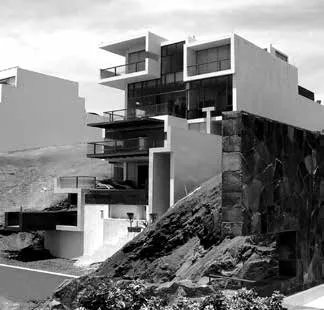
阿尔瓦雷茨海滨别墅 Alvarez Beach House

阿尔瓦雷茨海滨别墅 Alvarez Beach House
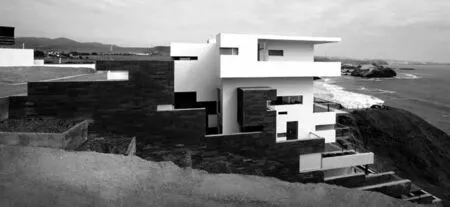
阿尔瓦雷茨海滨别墅 Alvarez Beach House
In 1911,Hiram Bingham,an American explorer revealed the most emblematic Inca complex nowadays,Machu Picchu.Even if this event has been called a “discovery”,locals from the area who guided Hiram Bingham to its location,cultivated the terraces [andenes] of the site that was built during the 15th century,a century before Spaniards reached the Inca land.Fortunately,Machu Picchu was not found by Spanish colonizers,and remained conserved under the vegetation that covered it for nearly 500 years.
When Hiram Bingham brought about the value of this complex of Inca architecture,the discussion on the national identity was central in the nation-state building of Peru,process that had only started in 1821 and that is yet to be consolidated.Machu Picchu and other Inca archaeological sites of the Urubamba river valley were chosen as symbols for this new-born nation.Inca architecture became one of the most exploited symbols for the creation of a Peruvian identity.Yet,during 286 years of colonization and evangelization,indigenous peoples,inheritors of the Inca civilization and their traditions were treated with disdain.Nevertheless,the resilient Andean communities could safeguard their worldview/traditional knowledge that has been captured in constructions such as Machu Picchu.
However,even when having such magnificent examples of architecture that converse with the environment where they are placed,there is a discontinuity between Inca architecture and the Peruvian contemporary architecture.This has been fed by a capitalist,soul-less and uninspired production of buildings.The “colonial style” that has been constructed over pre-hispanic foundations has been copied; neo-colonial architecture and the “chicha style” have invaded Peruvian cities.The architecture in Peru is the reflection of a society that has been traumatized by a colonial past and later integrated into a global civilization without being cured of its traumas.
These are the reflections that accompany Luis Longhi’s architecture.Born in the city of Puno in 1954,next to the Lake Titicaca,the sacred lake of the Inca,where they are thought to have come from,Luis Longhi feels very close to the altiplano landscape where he has grown.From Italian descent,he was raised among Quechua and Aymara people that connected him emotionally with the ancestors,and their traditions,undermined by the hegemonic Western culture being imposed over the Andean world.
After studying and living for 15 years outside from Peru (United States and India),he felt the call of the ancestors and the need to return to his homeland in order to fullfil a mission,to recover the essence of an architecture from these lands,and conceive what could be a contemporary Inca architecture,retying his production to the broken threads that connect us with them.
But Luis Longhi’s search,is a search in the practice,it is not a theoretical search.Longhi is looking for an original architecture through the communication with the place,the feeling of local materials,the playing with the light,concepts learnt along his professional and academic practice.Longhi feels close to Louis Kahn,Isamu Noguchi,Peter Zumthor,Carlo Scarpa,and of course,the ancestors,pre-hispanic architects that communicate through their works:the waka of Puruchuco,the Temple of the Moon in Machu Picchu,and the Tiahuanaco Sun gate.
Longhi,as an artist-sculptor and architect,obeys primarly to his instinct in the moment of creation.He is inspired by some principles that he has come to elaborate through his practice.First,he understands nature as a divine creation and hence,a perfect one.From here,he derives the feeling of respect to the environment and place.Second,he accepts the ethymological intepretation of the word “design” as being formed by De,meaning Divine and Signum,meaning Sign.He defines design then as the act of taking divine decisions,which would give to the architect the huge responsibility of “guardian of the planet”.
Only by accepting this he could understand the assertion of Peter Zumthor of how to recognize good architecture:“only when it (the architectural work) can move…”.He considers the work of an architect as the capability of generating a divine creation.Following classical ideas informed by Christianism and the Enlightment,he firmly defends the idea of architecture as the most powerful tool to save or ruin the world.Third,he is inspired by the thinking of Louis Kahn who talks about an “architecture with soul”.Fourth,he considers himself as having been,like Luis Barragán,“touched”by beauty.And finally,he admires the labor of Inca architects that honored their gods through their work.Hence,the search of Longhi is of creating architecture responsible,with the environment and the cultural space,charged with soul,that can move emotions in its dwellers and visitors,and that connects the present with the past,through the regeneration of Inca principles of design.The result:Longhi’s architecture appears as sculptures in the landscape.
Longhi has enjoyed working not only in the natural landscape,like in the case of the beach houses,but he has also established deep relationships with old buildings in ruins.In these projects,Yuyanapaq and the Municipal Theatre,he tried to connect with the memory of the buildings.In the case of the exhibition Yuyanapaq,the recent Peruvian past is confronted,marked by terrorism and a war [1980-1992] that has mostly been suffered by the inheritors of the Inca,the Andean peasant communities.In this curatorial work Longhi established a relationship with the hosting house,the Casa Riva Agüero,a house that has witnessed the sacking during the Pacific War.The tour in the exhibition corresponds to the tour into the past and feelings of this centenary house,and for 18 months,the dwellers of the house in ruins,were the victims of the war,achieving a poetic metaphor between the country and the house.
The Municipal Theatre,partly consumed by a fire in 1998 was adapted by Longhi to be the scenery of the classic Shakespeare,King Lear.He transformed the audience floor in the stage,connecting the old stage in ruins through a platform,that later became the stage for several other plays.In this intervention,Longhi tried to respect the building and its wounds,in order to leave them cured until it was restored.
Yet,the emblematic work developed by Longhi is the Pachamac hill house.In this building,a residence for a couple of intellectuals,Longhi captures all the principles that guide his practice,recovering pre-hispanic symbols and traces expressing with mastery the deep interrelations between art,architecture and place.Working with local materials found in the site,Longhi created a land art in between the sea and the hills of the pre-Andes mountains.
These are only the first stones of the contemporary Machu Picchu.But building Machu Picchu was not the task of only one architect.Longhi’s work as educator aims at raising a new generation of Peruvian [and worldwide] architects that respect the environment,the place and the culture,putting new stones in the contemporary Machu Pichu.
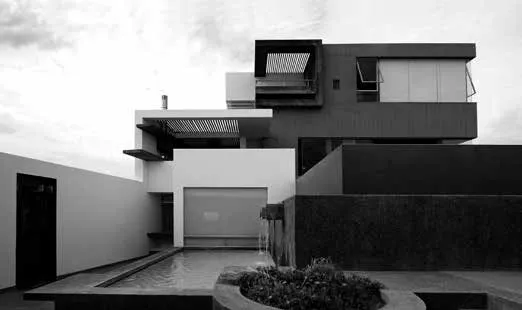
米斯特里欧海滩别墅 Misterio Beach House
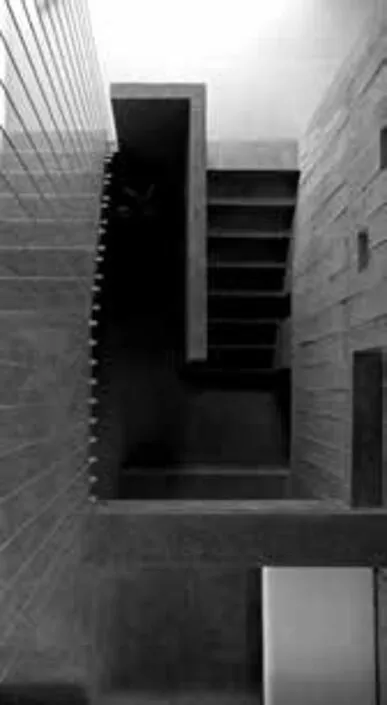
米斯特里欧海滩别墅 Misterio Beach House
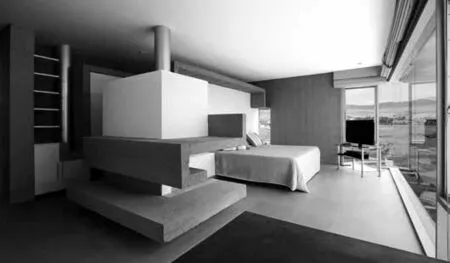
米斯特里欧海滩别墅 Misterio Beach House
